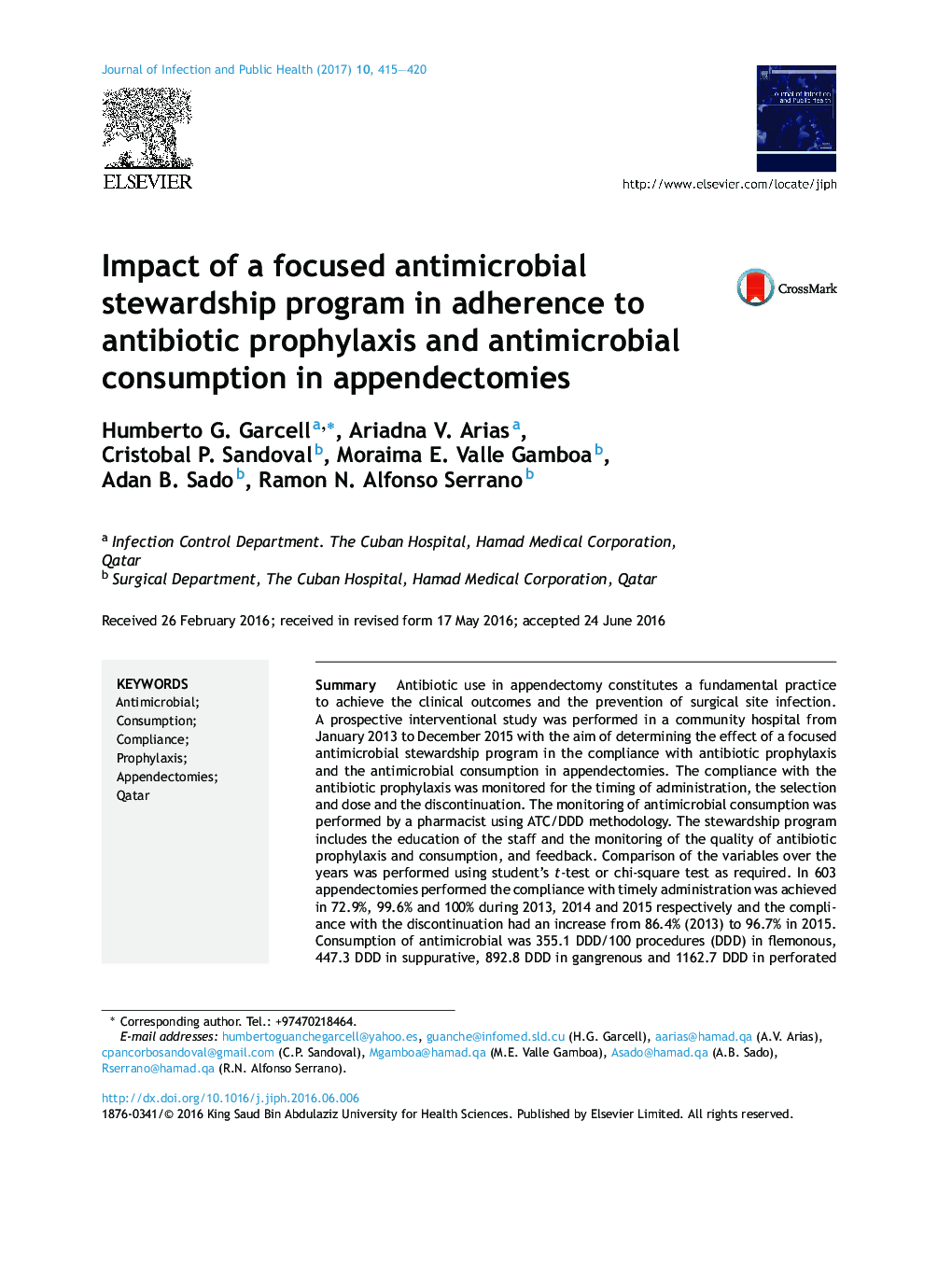| Article ID | Journal | Published Year | Pages | File Type |
|---|---|---|---|---|
| 5672777 | Journal of Infection and Public Health | 2017 | 6 Pages |
SummaryAntibiotic use in appendectomy constitutes a fundamental practice to achieve the clinical outcomes and the prevention of surgical site infection. A prospective interventional study was performed in a community hospital from January 2013 to December 2015 with the aim of determining the effect of a focused antimicrobial stewardship program in the compliance with antibiotic prophylaxis and the antimicrobial consumption in appendectomies. The compliance with the antibiotic prophylaxis was monitored for the timing of administration, the selection and dose and the discontinuation. The monitoring of antimicrobial consumption was performed by a pharmacist using ATC/DDD methodology. The stewardship program includes the education of the staff and the monitoring of the quality of antibiotic prophylaxis and consumption, and feedback. Comparison of the variables over the years was performed using student's t-test or chi-square test as required. In 603 appendectomies performed the compliance with timely administration was achieved in 72.9%, 99.6% and 100% during 2013, 2014 and 2015 respectively and the compliance with the discontinuation had an increase from 86.4% (2013) to 96.7% in 2015. Consumption of antimicrobial was 355.1 DDD/100 procedures (DDD) in flemonous, 447.3 DDD in suppurative, 892.8 DDD in gangrenous and 1162.7 DDD in perforated appendectomies. Reduction in consumption for cefuroxime (26.2%), metronidazole (12.6%) and ceftriaxone (18.1%) was observed. The consumption of antimicrobials in flemonous and suppurated appendectomies achieved the lowest figure in 2015. The focused antimicrobial stewardship program was effective to improve the timely administration and the proper discontinuation of prophylactic antibiotic, with an important reduction of antimicrobial consumption.
